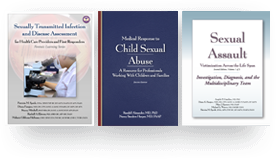Child Maltreatment in Clinical Settings
By: Alayna Roberts
Overview
Child abuse and neglect, known as child maltreatment, takes place when a child’s basic needs are not being met. These needs include those that are required for proper development, such as emotional, educational, physical and medical, but also include the omission from resources like housing, clothing, education, and food. Child maltreatment has an extensive and overwhelming effect on a child, their family, and community.
Identifying the Problem
Though identifying child maltreatment has been challenging over the years, the implementation of screening strategies has been the most efficient approach. These screening tools have been known to lower the rate of false positives for suspected cases of maltreatment and actual cases of maltreatment. Included in these screening strategies are checklists or protocols to determine if a child is being neglected or abused, and are based on markers such as:
- Age
- Type of injury
- Repeated pattern of incidence
- A history inconsistent with an injury

Adverse Childhood Experiences (ACEs)
Experiencing maltreatment as a child can result in mental, physical, behavioral, and social consequences throughout development and into adulthood. Children who have experienced maltreatment are more likely to have negative, long-lasting effects in areas such as education and job potential, which can lead to risks of injury, depression, infections, diabetes and more. Additionally, they may find it difficult to have and maintain relationships, struggle with substance abuse, and engage in criminal activity.
Furthermore, children model adult behavior, meaning that children who have experienced maltreatment will learn that the behavior they are receiving from their caregivers is the “right” or “normal” way to communicate. This can result in a generational cycle of neglectful behavior.
Providing Support
There is a great deal of research involved when approaching the topic of providing support for maltreated children. Interacting with other people can be difficult for some children because they are often emotionally and socially delayed as a result of maltreatment. Generally, clinicians suggest being consistent, predictable, and repetitive while treating maltreated children as they are cautious to new situations. As mentioned in our latest publication, here are some things to remember when meeting with a neglected child:
- Do not lecture the child about “appropriate behavior;” instead, suggest how they can communicate in different ways with others.
- Try to make instructions as clear as possible by using fewer words and explain it to them in a way that will not make the child feel guilty.
- Understand the behaviors of neglected children before punishing them, and be gentle if discipline is necessary, as the child will most likely feel vulnerable.
- Actively listen and talk with the child and create a relaxing environment.
- Have realistic expectations and know treatment takes time. Clinicians and caregivers cannot provide what is needed for nurturing a neglected child if they, too, are depleted.
How to Help
If you believe someone is experiencing neglect, call or text the Childhelp National Child Abuse hotline at 800-422-4453.
Additional Resources
If you want to learn more about child maltreatment, check out our latest publication, Mental Health Issues of Child Maltreatment: Contemporary Strategies. This peer-reviewed, two-volume set gives professionals across multiple fields vital resources for working with children.







